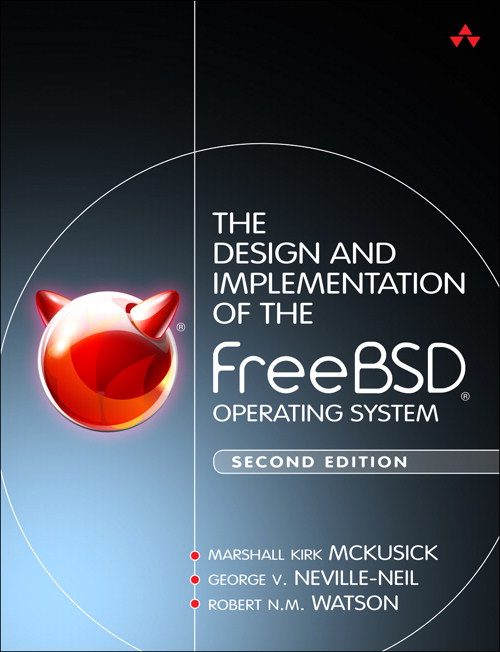
Now available: The Design and Implementation of the FreeBSD Operating System (Second Edition)
[ source navigation ] [ diff markup ] [ identifier search ] [ freetext search ] [ file search ] [ list types ] [ track identifier ]
FreeBSD/Linux Kernel Cross Reference
sys/Documentation/cputopology.txt
Version:
- FREEBSD - FREEBSD-13-STABLE - FREEBSD-13-0 - FREEBSD-12-STABLE - FREEBSD-12-0 - FREEBSD-11-STABLE - FREEBSD-11-0 - FREEBSD-10-STABLE - FREEBSD-10-0 - FREEBSD-9-STABLE - FREEBSD-9-0 - FREEBSD-8-STABLE - FREEBSD-8-0 - FREEBSD-7-STABLE - FREEBSD-7-0 - FREEBSD-6-STABLE - FREEBSD-6-0 - FREEBSD-5-STABLE - FREEBSD-5-0 - FREEBSD-4-STABLE - FREEBSD-3-STABLE - FREEBSD22 - l41 - OPENBSD - linux-2.6 - MK84 - PLAN9 - xnu-8792
SearchContext: - none - 3 - 10
SearchContext: - none - 3 - 10
1 2 Export CPU topology info via sysfs. Items (attributes) are similar 3 to /proc/cpuinfo. 4 5 1) /sys/devices/system/cpu/cpuX/topology/physical_package_id: 6 7 physical package id of cpuX. Typically corresponds to a physical 8 socket number, but the actual value is architecture and platform 9 dependent. 10 11 2) /sys/devices/system/cpu/cpuX/topology/core_id: 12 13 the CPU core ID of cpuX. Typically it is the hardware platform's 14 identifier (rather than the kernel's). The actual value is 15 architecture and platform dependent. 16 17 3) /sys/devices/system/cpu/cpuX/topology/book_id: 18 19 the book ID of cpuX. Typically it is the hardware platform's 20 identifier (rather than the kernel's). The actual value is 21 architecture and platform dependent. 22 23 4) /sys/devices/system/cpu/cpuX/topology/thread_siblings: 24 25 internel kernel map of cpuX's hardware threads within the same 26 core as cpuX 27 28 5) /sys/devices/system/cpu/cpuX/topology/core_siblings: 29 30 internal kernel map of cpuX's hardware threads within the same 31 physical_package_id. 32 33 6) /sys/devices/system/cpu/cpuX/topology/book_siblings: 34 35 internal kernel map of cpuX's hardware threads within the same 36 book_id. 37 38 To implement it in an architecture-neutral way, a new source file, 39 drivers/base/topology.c, is to export the 4 or 6 attributes. The two book 40 related sysfs files will only be created if CONFIG_SCHED_BOOK is selected. 41 42 For an architecture to support this feature, it must define some of 43 these macros in include/asm-XXX/topology.h: 44 #define topology_physical_package_id(cpu) 45 #define topology_core_id(cpu) 46 #define topology_book_id(cpu) 47 #define topology_thread_cpumask(cpu) 48 #define topology_core_cpumask(cpu) 49 #define topology_book_cpumask(cpu) 50 51 The type of **_id is int. 52 The type of siblings is (const) struct cpumask *. 53 54 To be consistent on all architectures, include/linux/topology.h 55 provides default definitions for any of the above macros that are 56 not defined by include/asm-XXX/topology.h: 57 1) physical_package_id: -1 58 2) core_id: 0 59 3) thread_siblings: just the given CPU 60 4) core_siblings: just the given CPU 61 62 For architectures that don't support books (CONFIG_SCHED_BOOK) there are no 63 default definitions for topology_book_id() and topology_book_cpumask(). 64 65 Additionally, CPU topology information is provided under 66 /sys/devices/system/cpu and includes these files. The internal 67 source for the output is in brackets ("[]"). 68 69 kernel_max: the maximum CPU index allowed by the kernel configuration. 70 [NR_CPUS-1] 71 72 offline: CPUs that are not online because they have been 73 HOTPLUGGED off (see cpu-hotplug.txt) or exceed the limit 74 of CPUs allowed by the kernel configuration (kernel_max 75 above). [~cpu_online_mask + cpus >= NR_CPUS] 76 77 online: CPUs that are online and being scheduled [cpu_online_mask] 78 79 possible: CPUs that have been allocated resources and can be 80 brought online if they are present. [cpu_possible_mask] 81 82 present: CPUs that have been identified as being present in the 83 system. [cpu_present_mask] 84 85 The format for the above output is compatible with cpulist_parse() 86 [see <linux/cpumask.h>]. Some examples follow. 87 88 In this example, there are 64 CPUs in the system but cpus 32-63 exceed 89 the kernel max which is limited to 0..31 by the NR_CPUS config option 90 being 32. Note also that CPUs 2 and 4-31 are not online but could be 91 brought online as they are both present and possible. 92 93 kernel_max: 31 94 offline: 2,4-31,32-63 95 online: 0-1,3 96 possible: 0-31 97 present: 0-31 98 99 In this example, the NR_CPUS config option is 128, but the kernel was 100 started with possible_cpus=144. There are 4 CPUs in the system and cpu2 101 was manually taken offline (and is the only CPU that can be brought 102 online.) 103 104 kernel_max: 127 105 offline: 2,4-127,128-143 106 online: 0-1,3 107 possible: 0-127 108 present: 0-3 109 110 See cpu-hotplug.txt for the possible_cpus=NUM kernel start parameter 111 as well as more information on the various cpumasks.
Cache object: da8bed1ac62087f5c0e7cb6ddd91574f
[ source navigation ] [ diff markup ] [ identifier search ] [ freetext search ] [ file search ] [ list types ] [ track identifier ]